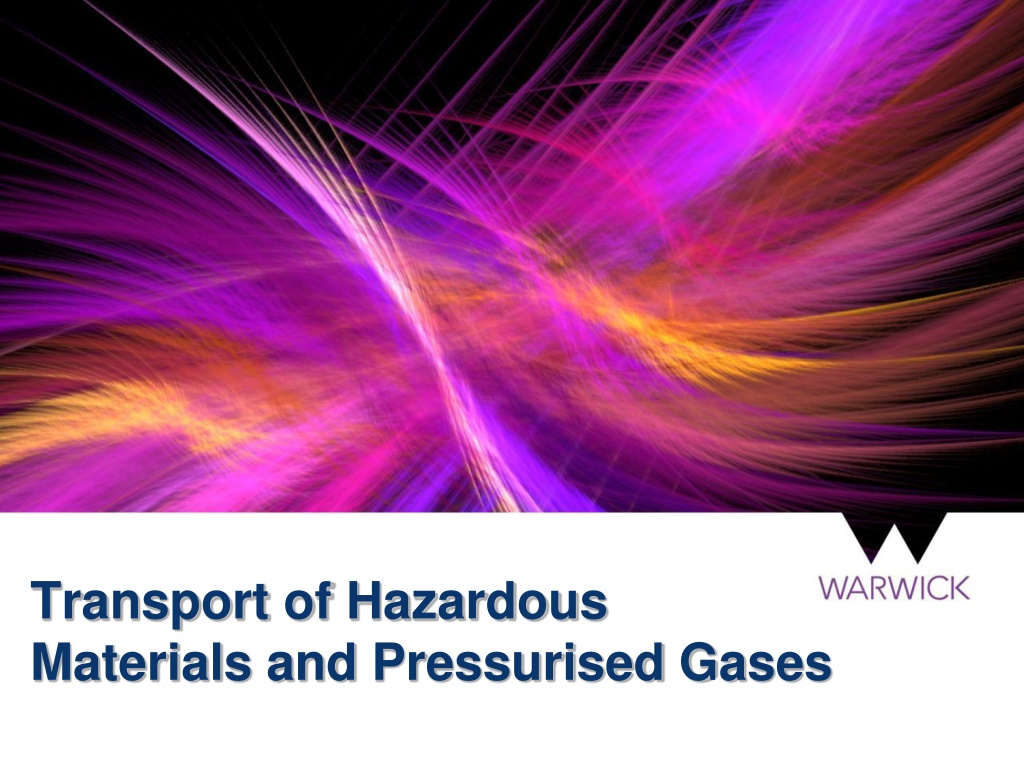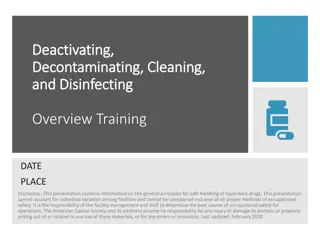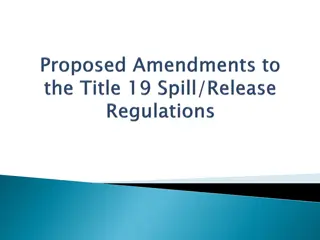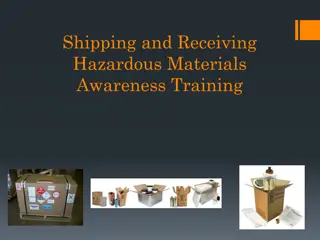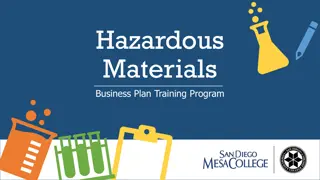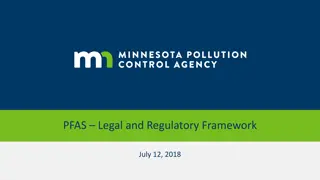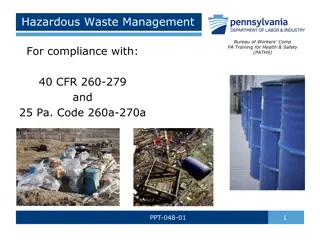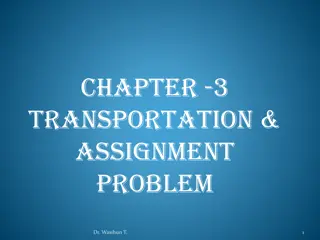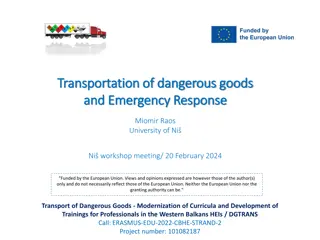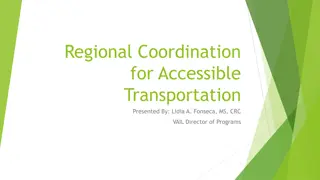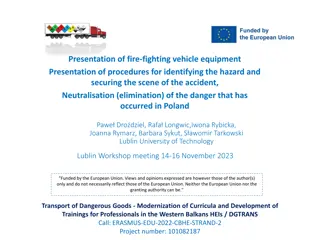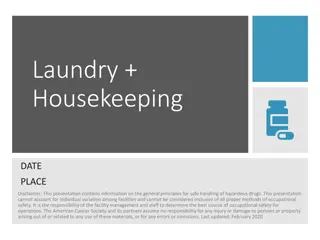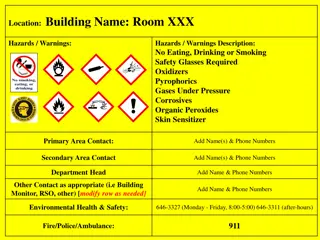Understanding Hazardous Materials Transportation Regulations
Legislation governs the transportation of hazardous materials, including strict rules for packaging and transport. Dangerous goods are classified into nine categories, each with specific hazards. Consignors must identify, label, and package goods properly to prevent risks. Biological materials require separate classifications for transportation. Only designated individuals are authorized to handle hazardous substances. Training and compliance are crucial for safe transport of goods.
Download Presentation

Please find below an Image/Link to download the presentation.
The content on the website is provided AS IS for your information and personal use only. It may not be sold, licensed, or shared on other websites without obtaining consent from the author. Download presentation by click this link. If you encounter any issues during the download, it is possible that the publisher has removed the file from their server.
E N D
Presentation Transcript
Transport of Hazardous Materials and Pressurised Gases
Transport of Hazardous Materials and Pressurised Gases There is strict legislation surrounding the transportation of certain goods via road, rail, air or sea Private cars must not be used for the transportation of certain hazardous materials Only specified individuals in Life Sciences, Medical School and the Department of Chemistry trained in packaging and transportation are authorised to package and despatch hazardous substances.
What are Dangerous Goods? UN Class Dangerous Goods Division(s) Classification There are 9 classes of dangerous goods that relate to chemicals, infectious substances and pressurised transportable gases (see table) 1 Explosives 1.1 - 1.6 Explosive 2.1 Flammable gas 2 Gases Non-flammable, non-toxic gas 2.2 2.3 Toxic gas 3 Flammable liquid Flammable liquid 4.1 Flammable solid Spontaneously combustible substance 4.2 4 Flammable solids Substance which in contact with water emits flammable gas 4.3 5.1 Oxidising substance 5 Oxidising substances 5.2 Organic peroxide 6.1 Toxic substance 6 Toxic substances 6.2 Infectious substance 7 Radioactive material Radioactive material 8 Corrosive substances Corrosive substance Miscellaneous dangerous goods Miscellaneous dangerous goods 9
What are the requirements? Consignors have a duty to: Identify the hazards of the goods they intend to transport Label the goods so the hazard(s) are readily identifiable Package the goods in accordance with legal requirements so not to cause a risk to others (preventing leaks, damage, etc) Transport them in a way not to cause a hazard, noting that there are restrictions for some material categories and requirements for drivers to have undergone ADR training (where above a small load threshold )
Transport of Biological Materials Infectious biological materials must be classified for transportation into one of two categories; A and B. Separate licences and classifications exist for biological waste and transport of non-infectious GM materials, for example GM plants and seeds.
Authorised Packagers The following Departments have a number of staff who are authorised to initiate and approve the transport of biological materials, including any internal transport within the University. School of Engineering Chemistry Department Warwick Medical School/School of Life Sciences The latest list of staff can be downloaded from here
Authorised Packagers For advice on the packaging of non-biological materials that constitute dangerous goods contact must be made with the Health and Safety Department and the University s approved carrier.
Approved Carriers The current University approved courier for the transportation of Dangerous Goods can be found by following this link A number of other couriers can be used for the occasional Category A biological package, or for the bulk transfer of dangerous goods that may be required when academics move between universities. For accessing these, contact must be made with the Health and Safety Department in advance.
Dangerous Goods Safety Adviser (DGSA) The Health and Safety Department renew a contract each year with a Dangerous Goods Safety Adviser who can provide advice in relation to the transportation of any dangerous good that needs to be transported by road, rail, air or sea. Should anyone require advice in this area, individuals should contact the Health and Safety Department via HealthSafetyHelpdesk@warwick.ac.uk
